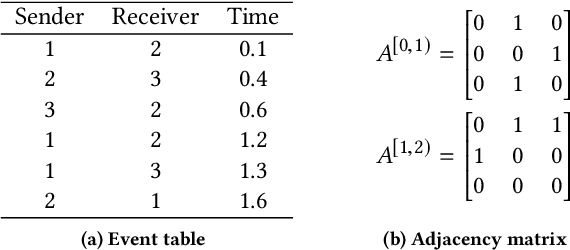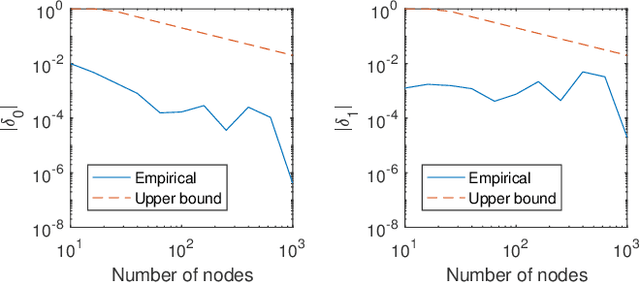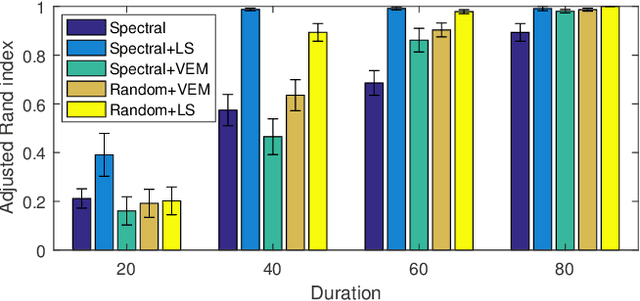Ruthwik R. Junuthula
The Block Point Process Model for Continuous-Time Event-Based Dynamic Networks
Nov 29, 2017



Abstract:Many application settings involve the analysis of timestamped relations or events between a set of entities, e.g. messages between users of an on-line social network. Static and discrete-time network models are typically used as analysis tools in these settings; however, they discard a significant amount of information by aggregating events over time to form network snapshots. In this paper, we introduce a block point process model (BPPM) for dynamic networks evolving in continuous time in the form of events at irregular time intervals. The BPPM is inspired by the well-known stochastic block model (SBM) for static networks and is a simpler version of the recently-proposed Hawkes infinite relational model (IRM). We show that networks generated by the BPPM follow an SBM in the limit of a growing number of nodes and leverage this property to develop an efficient inference procedure for the BPPM. We fit the BPPM to several real network data sets, including a Facebook network with over 3, 500 nodes and 130, 000 events, several orders of magnitude larger than the Hawkes IRM and other existing point process network models.
Evaluating Link Prediction Accuracy on Dynamic Networks with Added and Removed Edges
Jul 25, 2016



Abstract:The task of predicting future relationships in a social network, known as link prediction, has been studied extensively in the literature. Many link prediction methods have been proposed, ranging from common neighbors to probabilistic models. Recent work by Yang et al. has highlighted several challenges in evaluating link prediction accuracy. In dynamic networks where edges are both added and removed over time, the link prediction problem is more complex and involves predicting both newly added and newly removed edges. This results in new challenges in the evaluation of dynamic link prediction methods, and the recommendations provided by Yang et al. are no longer applicable, because they do not address edge removal. In this paper, we investigate several metrics currently used for evaluating accuracies of dynamic link prediction methods and demonstrate why they can be misleading in many cases. We provide several recommendations on evaluating dynamic link prediction accuracy, including separation into two categories of evaluation. Finally we propose a unified metric to characterize link prediction accuracy effectively using a single number.
 Add to Chrome
Add to Chrome Add to Firefox
Add to Firefox Add to Edge
Add to Edge